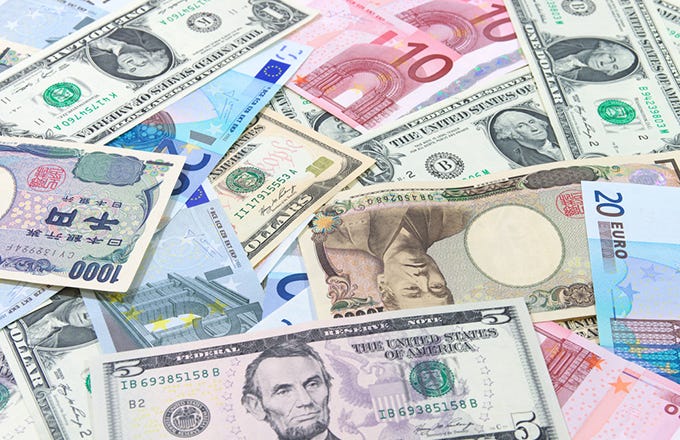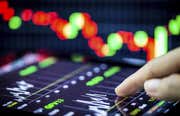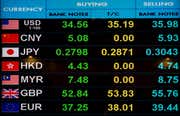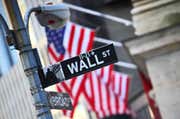
|
Now, let's take a look at a currency table:
 |
Row 1 & Column 1: Currency Name (or symbol)
The currencies are exactly the same in both the column and the row. This table allows you to compare the value of a currency in relation to another. The only exception on this table is gold, which is commonly quoted in currency tables because it is considered to be an alternative currency that anyone can purchase.
If you are reading this table the values are in the following context:
$1 in currency of row #1, is worth $___ in column #1 dollars.
For example, 1 euro is worth $1.3926 in Canadian dollars. If you were in Canada and you wanted to exchange your 1 euro for Canadian dollars, you would get $1.3926 in return. On the other side of the equation, if you had $1 Canadian and you wanted to convert it to euros, you would get 0.7181 in return. Both of these numbers are circled in red on the table.
It is also important to note that 1/1.3926 = 0.7181. If you only have the currency rate for one direction, then all you need to do is divide one by that number to find the value in the other country's currency.
Financial Tables: Options Table
Related Articles
-
 Investing
InvestingReading Financial Tables Tutorial
Learn about six common types of financial tables and figure out how to interpret them. -
 Trading
TradingCurrency fluctuations: How they effect the economy
Currency fluctuations are a natural outcome of the floating exchange rate system that is the norm for most major economies. Read on for what effects these changes can have. -
 Trading
TradingTop 5 Hardest-Hit Currencies
The value of a country's currency is dependent on many factors that will cause it to fluctuate, relative to other world currencies. -
 Trading
Trading6 top-traded currencies and why they're so popular
Every currency has specific features that affect its underlying value and price movements in the forex market. Learn why these currencies are especially popular for trading. -
 Investing
InvestingHedge Against Exchange Rate Risk with Currency ETFs
Because of their investor-friendly features, currency ETFs are ideal hedging instruments for retail investors to manage exchange risk. -
 Trading
TradingHow to Calculate an Exchange Rate
Struggling to get a grasp on exchange rates? Here's what you need to know. -
 Insights
InsightsA Primer On Reserve Currencies
For nearly a century, the U.S. dollar has served as the world's premier reserve currency, but the future is uncertain.


